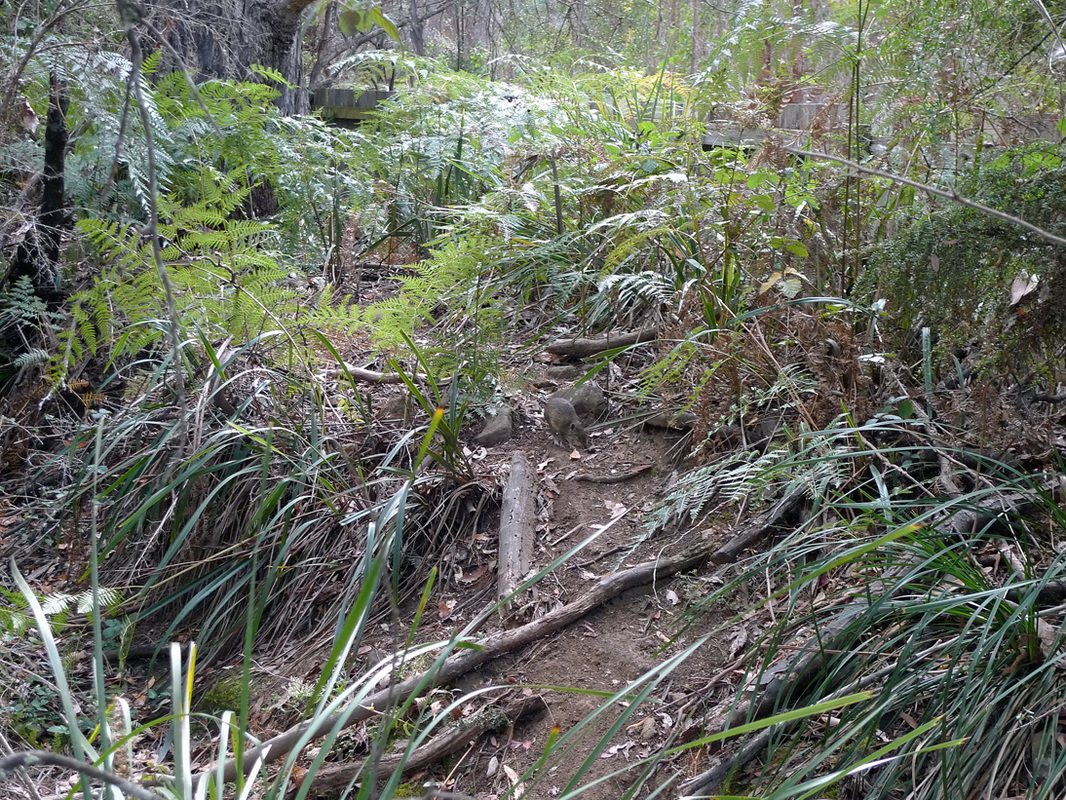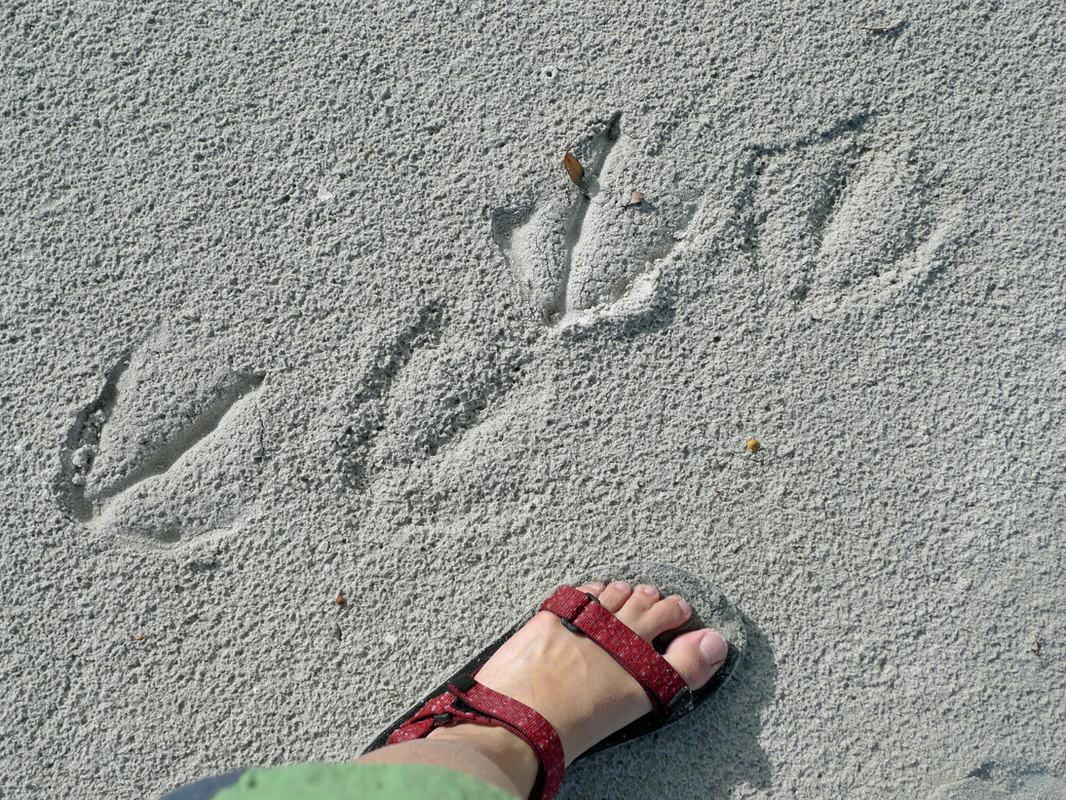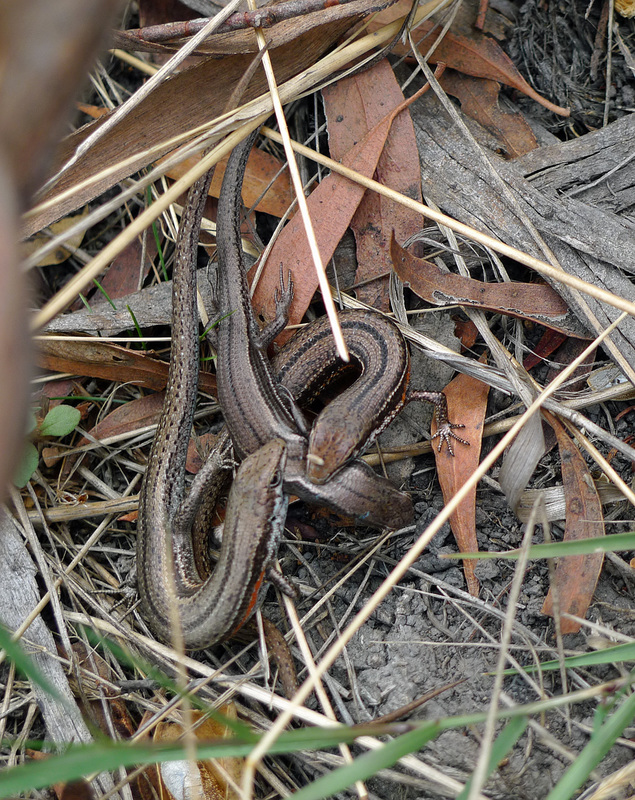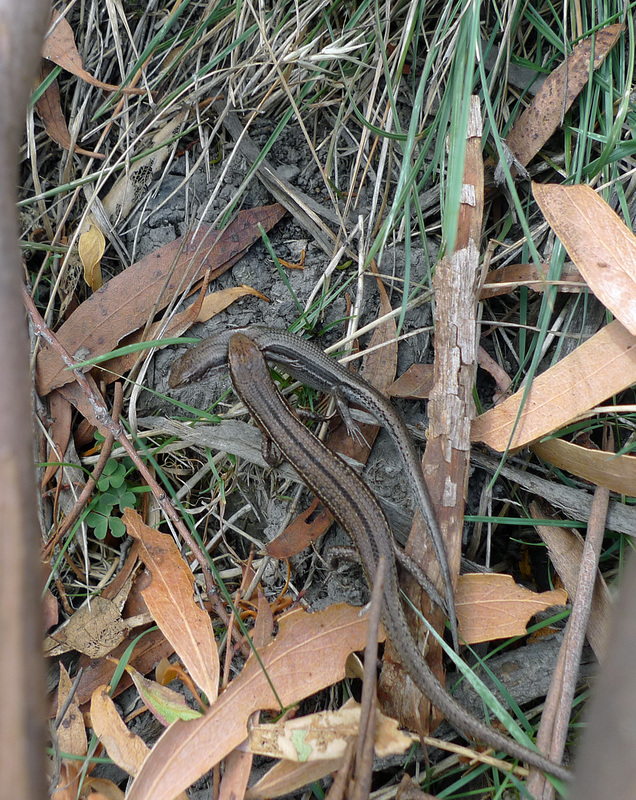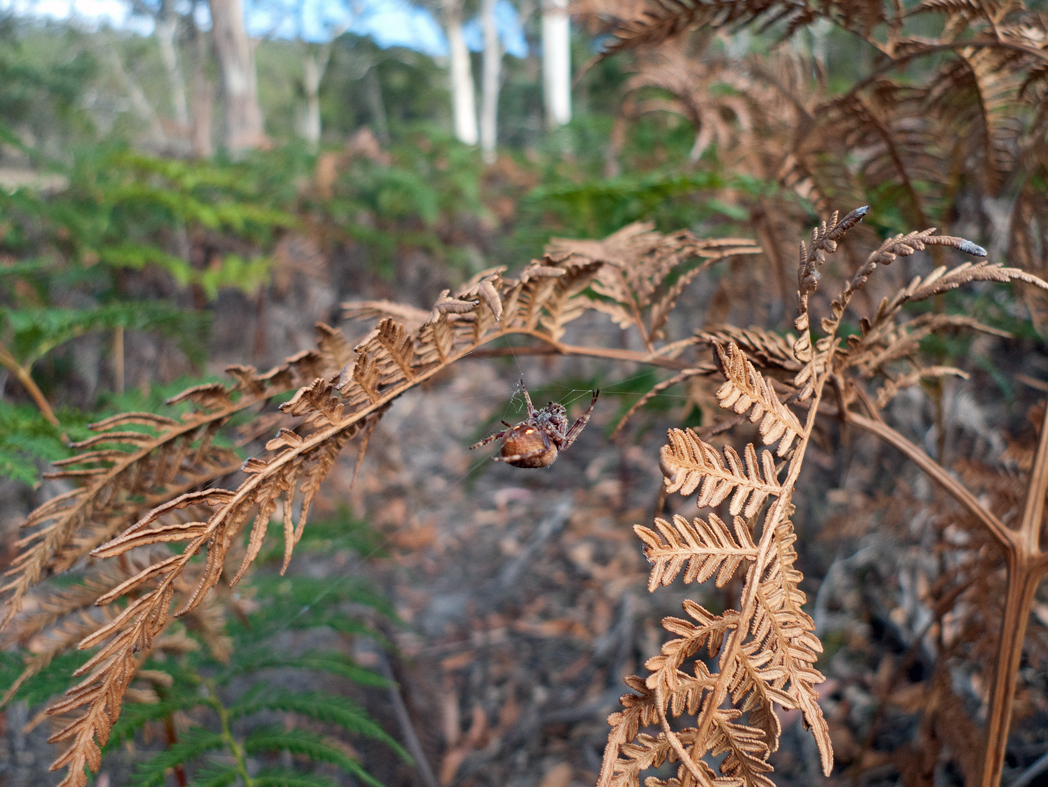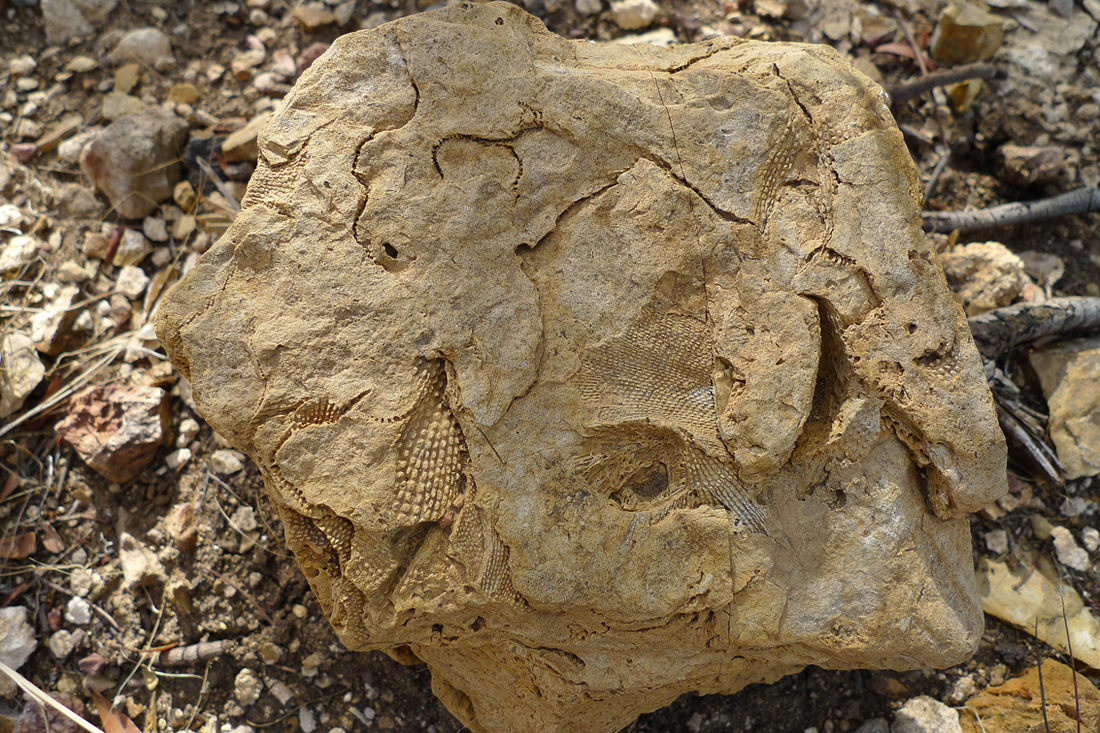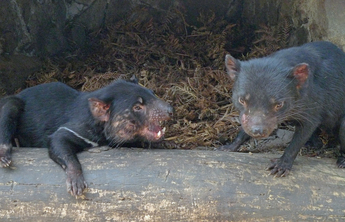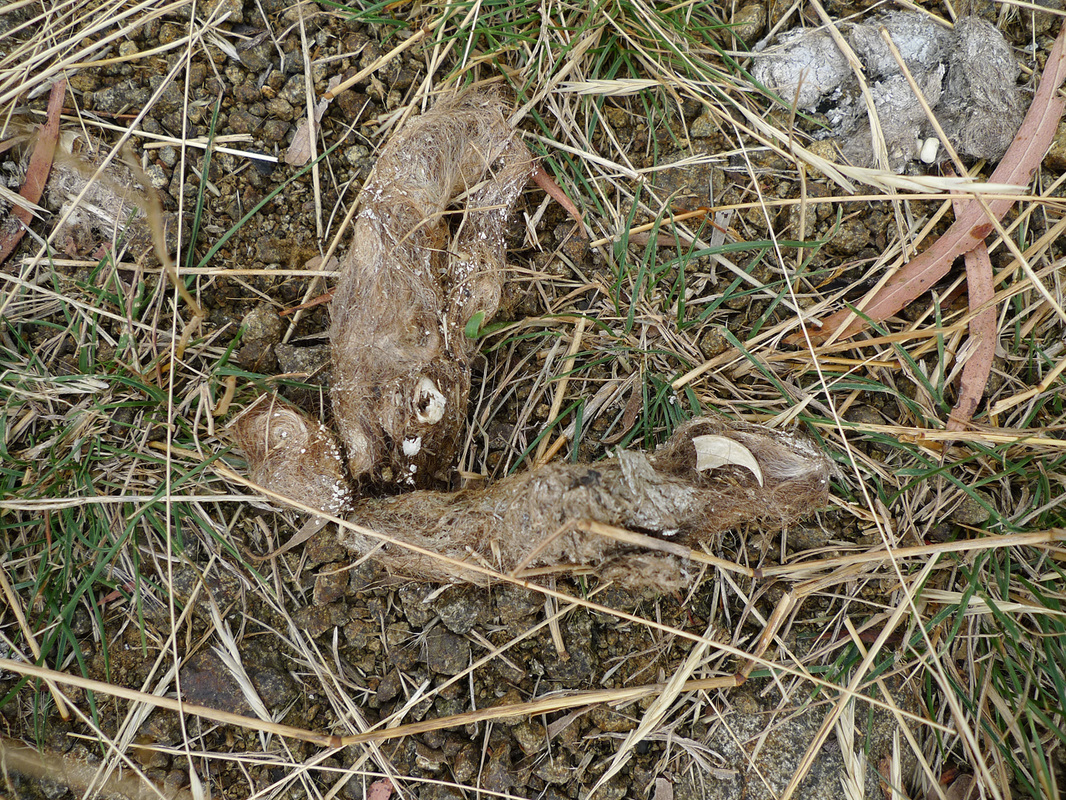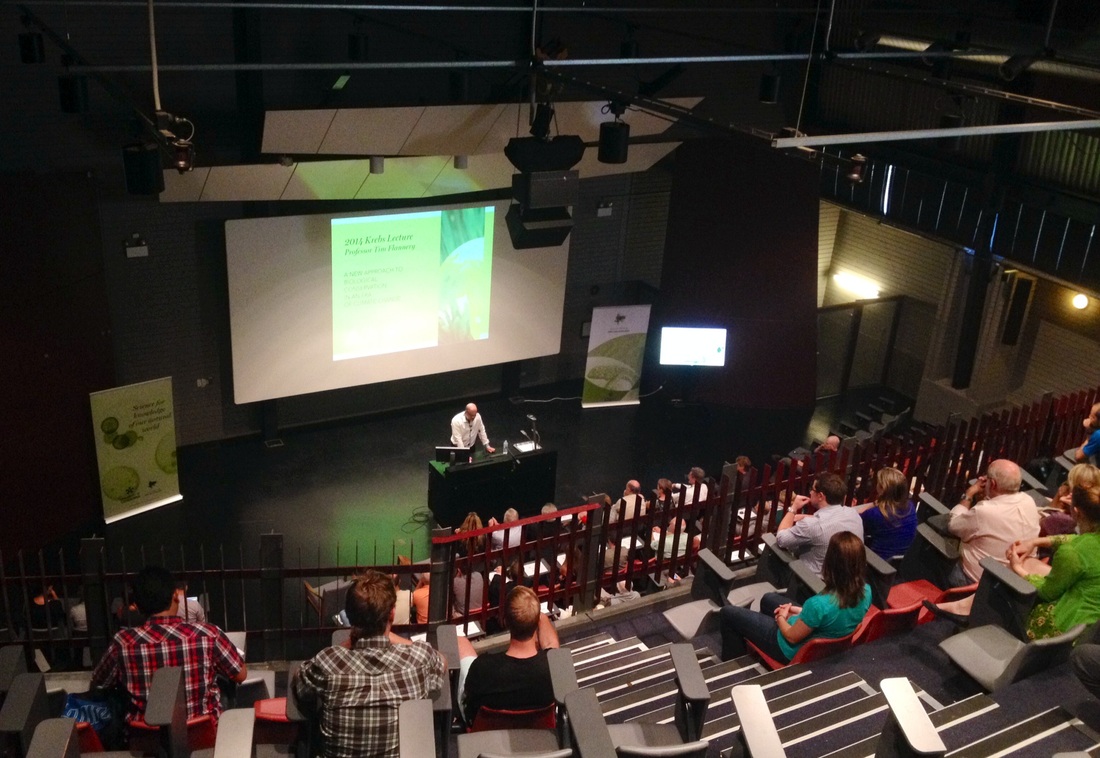Anna MacDonaldI'm a biologist with interests in genetics, conservation, ecology, invasive species, and wildlife management. Archives
May 2019
Categories
All
|
Back to Blog
Fieldwork can be hard and repetitive, sometimes even tedious. The Great Poo Hunt had the potential to become that way, walking many kilometres day after day, often in beautiful places but staring intently at the floor. Fortunately, I was lucky during this trip: every day I have found something new to wonder at - apart from all the poo of course! Some examples: Not the best photograph (compact camera only on this trip) but spot the southern brown bandicoot in the centre of the image, going about it's business in the middle of the day. We watched for a while and it didn't seem to care we were there. That was a treat! One particularly wet and miserable day we surveyed a vegetable farm, bleak and muddy with no protection from the wind. The consolation prize was many many little tiny Crinea frogs around the farm dam :) Pelican footprints in the sand! They are huge! I have seen many a pelican before, but never their footprints. One day I chanced upon a writhing blob that turned out not to be a scat (fortunately) but was instead these three Pseudemoia (species?) skinks: as best I could tell I watched two males wrestle with / over a female. Eventually one male let go and ran away, the victor then dragged the female into the leaf litter. I think I am glad I am not a skink! Invertebrate diversity was amazing, but mostly too fast for the little compact camera I had with me for this trip. This very cool spider (near Hobart) was kind enough to pose, so will have to represent the many other kinds of spiders, mites, grasshoppers, crickets, dragonflies etc. I encountered. Last but not least, one site we visited was rich in Permian mudstone (I think, I hope I have that right!) and almost every rock on the hillside was full of these wonderful fossils. If I hadn't been looking for scats I could have spent hours just wondering at these...
0 Comments
Read More
Back to Blog
The great Poo Hunt 201423/3/2014 For the last couple of weeks I've been in Tasmania, helping with fieldwork for The Great Poo Hunt - a large scale predator scat survey of the east of Tasmania. We've been collecting all scats that might belong to the larger mammalian predators, from selected survey sites. These will be DNA tested to identify the predator and some of the prey species whose remains are within each scat. Hopefully there will be lots of devil and quoll scats, signs of a healthy ecosystem! But I suspect there will also be a good proportion of feral cat scats and some dog scats. We really hope that we don't find any evidence of fox DNA in the scats - a fox population here would be disastrous for Tasmanian wildlife.
It's been hard work, with mud, wind, rain, heat, cold, leeches, biting ants and a heavy backpack (did someone say that science was glamorous...? ...probably not...) but I've had a wonderful time and got to see some parts of the country I would never normally get to. One thing I have really enjoyed is finding evidence of devils in the wild. Devil numbers have declined dramatically in recent years as a result of devil facial tumour disease (DFTD) but they are still hanging on across Tasmania and a lot of dedicated people are fighting to help them survive. I photographed the devils above at the Tasmanian Devil Park in Taranna. It has been years since I saw one in the wild (caveat - I have not spent an awful lot of time in Tasmania lately to go looking!). The scats are some that we came across at a devil latrine near Huonville. You can see they are full of fur and interesting pieces of bone and other prey remains. Devils tend to leave their scats in a favourite place and multiple devils may use the same site as a communal latrine / message board. The first latrine my team came across was in a beautiful spot on a ridgeline overlooking the Huon valley. We all agreed, the devils have it right, they like to poo with a view!
Back to Blog
Last Monday I attended - and live-tweeted from - the 2014 Krebs Lecture at the University of Canberra. The Krebs Lecture is an annual event staged by the Institute for Applied Ecology and named in honour of the ecologist Professor Charles Krebs. Charley is a "Thinker in Residence" at the IAE and spends the Australian summer with us.
This year's lecture was delivered by Professor Tim Flannery. He spoke on "A new approach to biological conservation in an era of climate change". About 500 people attended in person, more watched a live feed and there was enthusiastic participation on Twitter as well. If you want to see it for yourself, the live feed has been archived and I'm told a better quality recording will be made available shortly. I also made a storify of the twitter discussion of the talk (#Krebs2014). Professor Flannery began by discussing the climate change, especially in Australia. He covered warming oceans, sea level rise, floods, bushfires and extreme weather events. The talk then moved on to discuss biodiversity, endangered species and how changing climates will affect wildlife and habitats. The conclusion was a series of suggestions that the world / Australia / politicians / the general public need to embrace if we are to conserve biodiversity as the climate changes. I particularly liked the point that we should hold ourselves accountable for the environment as we are for the economy. Many of the audience questions were centred around the final point: Flannery's assertion that we need to leave 80% of our fossil fuels in the ground as we cannot afford to deal with the carbon pollution associated with using those resources. |
 RSS Feed
RSS Feed
